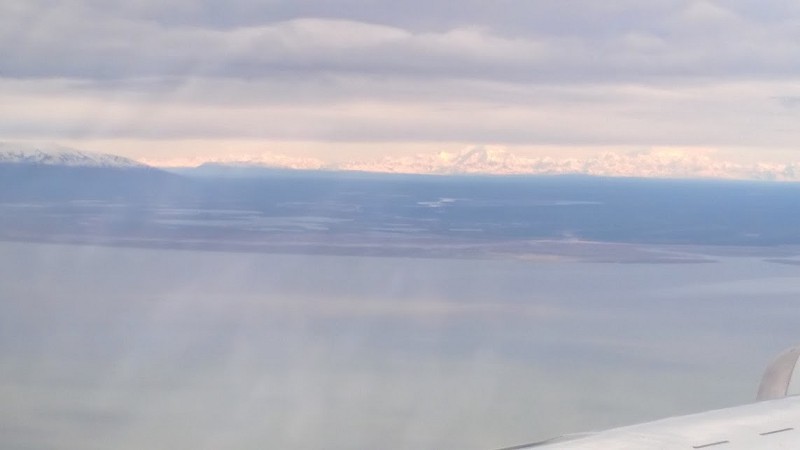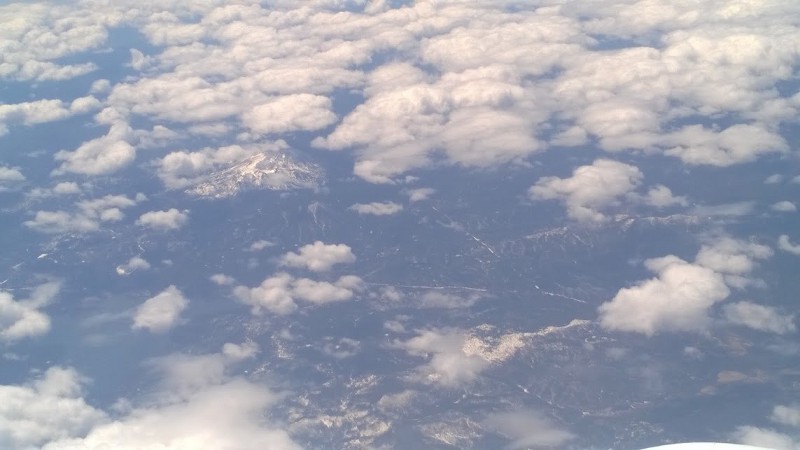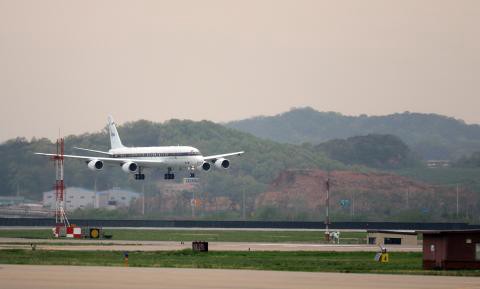The DC-8 left the United States on Tuesday, April 26, 2016 and arrived to Osan Air Force Base on Wednesday, April 27, 2016. This may sound like a normal flight time, if you have ever traveled from the United States to some where in Eastern Asia, and that is where you would be wrong. The DC-8 took off at 5:30 am, which again may sound reasonable, but for an instrument on the airplane to be ready for take-off, it has to be powered on for 1.5–3.0 hours. Yes, that meant I showed up at the DC-8 at 2:30 am, and, yes, that meant I woke up way too early to get to the plane at 2:30 am. But doesn’t the plane look awesome at night! And an awesome sunrise photo over California.

The NASA DC-8 prior to take-off to South Korea. This was at 4:30 am.

Sunrise over the Sierras in California during flight to Osan Air Force Base.
We stopped in Alaska for refueling and to change crew. Another fun rule — crew cannot work more than 12 hours, including pilots; then, the crew (and pilots) must have a 12 hour break until their next shift. The flight plan was on order 13 hours already, so to play it safe, we had a 2 hour layover in Alaska to prevent fatigue for the crew (scientists on the other hand were starting to feel the really early wake-up call).

NASA DC-8 landing in Anchorage, Alaska for a two hour refuel.
Our next objective was to do a spiral over a site in the northern big island of Japan (Hokkaido). The purpose of the spiral was to compare the measurements on the DC-8 against a ground-based instrument that measures CO2 from the surface to the level commercial airplanes typically fly (38,000 ft or 11 km, depending on your favorite unit of measurement).

NASA DC-8 spiraling towards ground in Hokkaido.

Another view during the spiral on the NASA DC-8.
Finally, we landed in Osan at 2:30 PM local time (10:30 PM local California time), which corresponded to 17 hours on the plane, not including the 3 hours of warm-up. Go us.

NASA DC-8 landing in Osan Air Force Base. Provided by https://espo.nasa.gov/missions/korus-aq/image/KORUS-AQ_-_DC-8_on_approach.
The next big event for the mission was media day that occurred yesterday. Every NASA mission I have participated in, there is a media day. The purpose of the event is to provide an opportunity for the local media and community to see the airplane, learn about the mission, and learn that NASA is more than astronauts.
However, this media was completely different compared to my prior experiences. With the large multinational collaboration and taking place over South Korea, this media day included members from the various agencies and departments of South Korea and United States (including the United States ambassador to South Korea) touring the airplane and learning about our mission.

One of the members from the US State Department talking to a science member about their instrument.
After speaking with the dignitaries for ~30 minutes, the local media boarded the airplane to interview the scientists and learn about the instruments, measurements, and mission.

Media blitz!
Starting this Monday (at the earliest), we will start our first science flights. Stay tuned. And if you have any questions, feel free to post!
